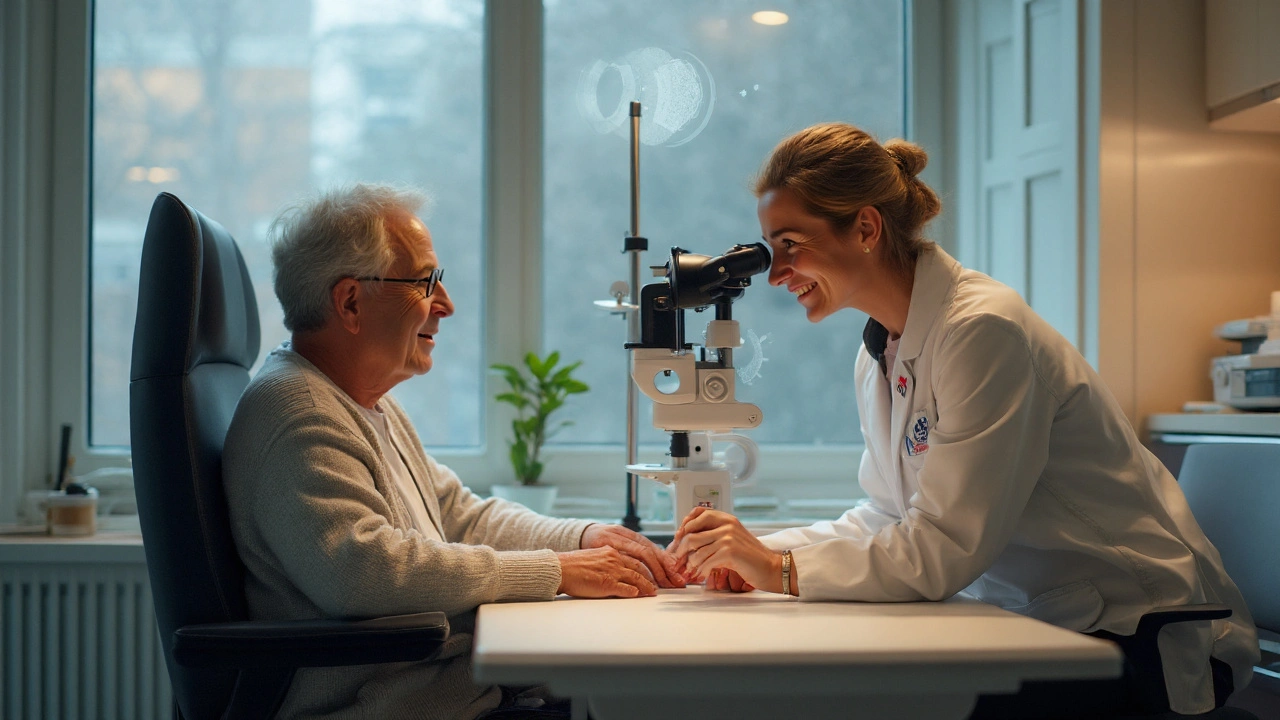Eye Cancer Detection: Spot It Early and Get Treated Fast
Finding eye cancer early can make all the difference. Most people think eye problems are just about vision, but some changes could signal a serious tumor. In this guide you’ll learn the everyday signs that shouldn’t be ignored and the basic tests doctors run to confirm a diagnosis. Keep reading and you’ll know exactly what to watch for and how to act.
Common signs to watch for
Not every eye irritation means cancer, but a few symptoms pop up often with ocular tumors. If you notice any of the following, call your eye doctor right away:
- New spot or pigmented growth on the white part of the eye (sclera) or on the iris.
- Sudden change in vision – blurry spots, dark patches, or a shadow that moves.
- Persistent redness that doesn’t get better with drops or allergy meds.
- Unexplained pain especially when moving the eye.
- Floaters or flashes that appear out of nowhere and stay.
These signs can show up slowly or suddenly. The key is to notice a change that lasts more than a few days. Even if you’ve had eye issues before, a new symptom deserves a fresh look.
How doctors check for eye cancer
When you book an appointment, the eye specialist (ophthalmologist) will run a few quick, non‑invasive tests. Most of them happen right in the clinic and don’t require surgery.
- Slit‑lamp exam: A bright microscope lets the doctor see the front of the eye in detail. It helps spot tiny lesions that look normal to the naked eye.
- Fundus photography: A special camera takes a clear picture of the retina and back of the eye. It’s useful for tracking growth over time.
- Ultrasound (B‑scan): Sound waves create an image of the inside of the eye. This can show the size and exact location of a tumor.
- Optical coherence tomography (OCT): Similar to an ultrasound but uses light. It gives a layered view of the retina and can detect early swelling.
- Biopsy (rare): If imaging isn’t clear, a tiny sample may be taken for lab analysis. This is usually the last step because it’s more invasive.
Most of the time, imaging alone is enough to confirm the presence of an ocular melanoma or other tumor. After a diagnosis, the doctor will discuss treatment options like laser therapy, radiation, or surgery.
Bottom line: Pay close attention to any new visual changes, and don’t wait for a “normal” eye exam to bring them up. Early detection gives you more choices and better outcomes.
Want to stay ahead? Schedule a routine eye check‑up at least once a year, especially if you have a family history of eye or skin cancers. Keep this page bookmarked – it’s a handy reminder of what to look for and what to ask your doctor.
Why Regular Eye Exams Are Crucial for Detecting Eye Cancer
Discover how routine eye exams catch eye cancer early, the types of cancer screened, exam components, and what you can do to protect your vision.
